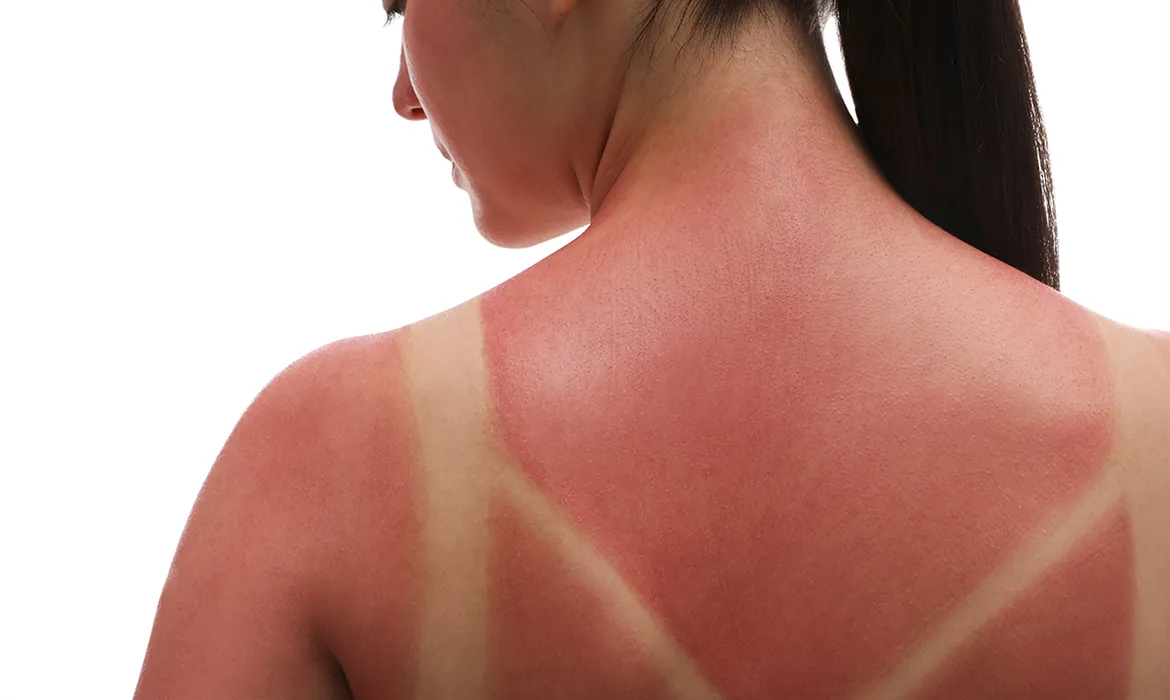Sunburn is an acute inflammatory response to overexposure to ultraviolet B (UVB) radiation, leading to direct DNA damage, apoptosis of keratinocytes, and immune cell activation. Clinically, it presents as erythema, pain, swelling, and in severe cases, blistering. UVB radiation causes the formation of cyclobutane pyrimidine dimers (CPDs), which trigger inflammation and immune suppression. Additionally, UVA penetrates deeper into the dermis, generating reactive oxygen species (ROS) that accelerate matrix degradation and damage to cellular structures. Repeated sunburns—especially in childhood—are strongly linked to increased lifetime risk of melanoma and non-melanoma skin cancers. The body’s natural antioxidant defenses (e.g., catalase, glutathione) are quickly overwhelmed during intense UV exposure, compounding cellular damage. Sunburn also initiates melanogenesis as a defense mechanism, leading to delayed tanning and pigmentation irregularities.
Chronic sun exposure causes photoaging, a subset of extrinsic aging marked by deep wrinkles, rough texture, hyperpigmentation, and loss of elasticity. This process, driven by cumulative UVA and UVB exposure, activates matrix metalloproteinases (MMPs), which degrade collagen and elastin fibers in the dermal matrix. Preventative strategies include the regular use of broad-spectrum sunscreens (SPF 30–50+), protective clothing, and avoidance of peak sun hours. After sunburn, treatment includes cool compresses, anti-inflammatory agents (such as aloe vera, NSAIDs), and hydration to reduce pain and support barrier recovery. Topical antioxidants like vitamin C and E, as well as DNA repair enzymes (e.g., photolyase), may mitigate UV-induced cellular damage. For sun-induced aging, interventions such as retinoids, peptide-based serums, laser resurfacing, and chemical peels can stimulate collagen remodeling. Oral photoprotective agents (e.g., Polypodium leucotomos, nicotinamide) are being explored for additional prevention. Consistent photoprotection from a young age remains the most effective strategy for maintaining youthful, healthy skin.
